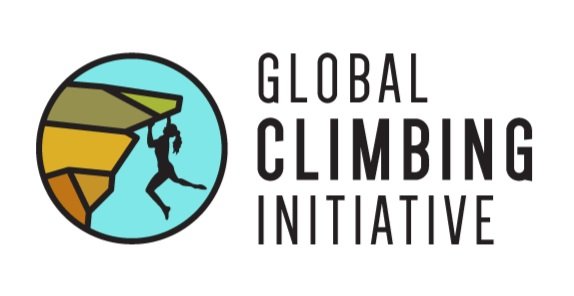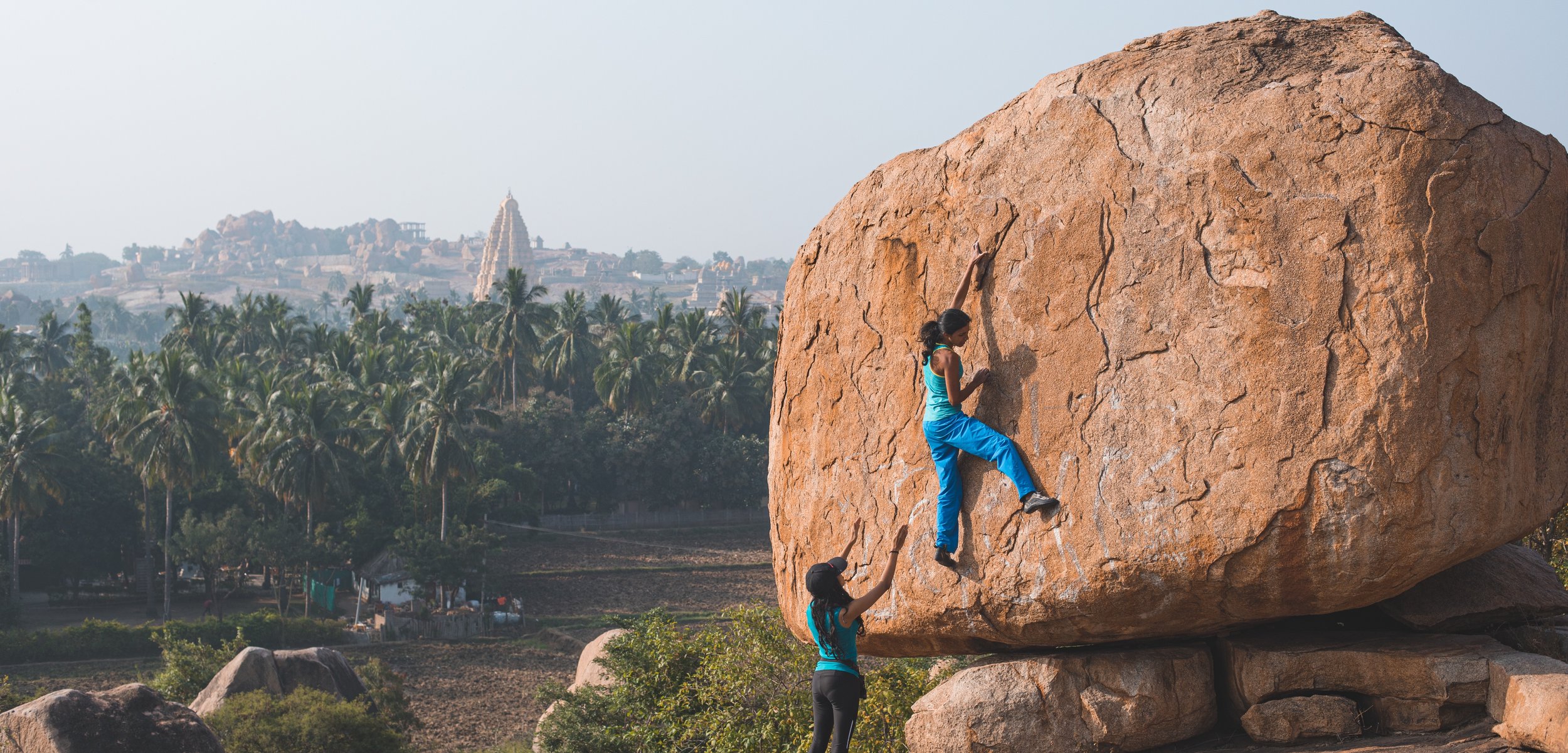Best Practices
How to Be a Responsible Climbing Tourist
By Dani Dobrot and Tyler Algeo
Cover photo by Joel Lim
Translate
عربي 普通话 Deutsch English فارسی Français Ελληνικά हिन्दी Indonesian Italiano 日本語 한국어 ລາວ македонски Melayu नेपाली Português Русский язык словенечки Español Kiswahili ภาษาไทย Türkçe اُردُو Tiếng Việt
If you require a language not listed here, or if you would like to volunteer to produce an official translation of this chapter, please email bestpractices@globalclimbing.org.
Please note that auto-translated content is not checked by GCI or the authors for accuracy.
Key lessons
Research the location ahead of time
Learn about and respect the local culture
Connect with locals before and during the trip
Learn and respect the local climbing etiquette
Support local businesses
Donate to support the climbing area
About the authors
Dani Dobrot is the Associate Director of the Global Climbing Initiative. Dani gained her first experience in locally-led capacity building with a program called Ghana Emergency Medicine Collaborative. During this time, she became inspired to work towards systemic change for the health and wellbeing of communities. She has since worked in Africa, the Middle East, and Asia at the intersection of community health and recreation. Dani’s main goal is to encourage a perspective that employs rock climbing to uplift, unite, and transform local communities.
Tyler Algeo is the founder of Climb Malawi, a socio-economically inclusive climbing community where everyone is welcome and no one is turned away. He is also the Director of Philosophy for The Global Climbing Initiative, where he draws upon a decade of experience in the international development sector to shape GCI's alignment of programs and philosophy. Tyler is a passionate advocate of anticolonialism and antiracism work, and believes that all global development work should be carried out through the autonomous decision making of local communities.
Peer reviewers
Algin Amores
About the best practices project
The Global Climbing Initiative's best practices project taps the expertise of climbing leaders around the world to share lessons learned in crag development and maintenance, environmental conservation, equity and inclusivity, community engagement, economic impact, and climbing organizations. By making this information more accessible, we hope to foster a more united and supported global climbing community. To learn more about this project and how you can support, visit globalclimbing.org/best-practices
Introduction
Tourism is a rapidly expanding industry, with an estimated 1.46 billion tourists worldwide in 2019. Adventure tourism, which includes activities such as hiking, caving, rafting, and rock climbing, is one of the fastest-growing sectors. In 2018, the global market for these forms of tourism was valued at US $586.3 billion and was projected to increase to US $1,626.7 billion by 2026. Climbing tourism, when practiced responsibly and with an effort to uplift local communities, can be an incredible driver of economic growth.
What is a responsible tourist?
Before exploring how to be a responsible climbing tourist, responsible tourism must be defined. There is no common definition; however, any attempt to define this phrase should include ethical and respectful behavior towards residents’ needs and interests economically, socioculturally, and environmentally as they seek to meet their sustainability goals. Ultimately, it is our responsibility to listen to the community we’re visiting to understand what responsible tourism looks like in that context. Tourists should engage in every new location and community with humility, giving respect to the local culture, environment, and norms. In the following chapter, we will provide some key ideas that will help a climbing tourist practice ethical and respectful behavior to ensure climbers continue to be welcomed to these destinations for generations.
Key Lesson #1
Research the location ahead of time
While tourism brings significant benefits—such as economic growth—it is important to also recognize its potential negative effects. These ramifications can include environmental degradation, social tensions, and accidentally overwhelming an area. Therefore, it is important for local communities and authorities to work towards a sustainable methodology in caring for the environment, community, and tourists. A responsible climbing tourist prioritizes understanding and respecting the laws and policies in place in specific locations. Do your research ahead of time. Also, be aware of overcrowding popular locations. Choosing to visit off-the-beaten-track climbing locales is an opportunity to create a greater positive impact on the lives of locals than a visit to a destination that is already overwhelmed.
-
Climbers can have a significant impact on the environment, especially in popular tourist destinations. It is important to minimize our impact to preserve these natural places by following practices such as Leave No Trace (lnt.org). The 7 principles of LNT are:
1. Plan ahead and prepare
2. Travel and camp on durable surfaces
3. Dispose of waste properly
4. Leave what you find
5. Minimize campfire impacts
6. Respect wildlife
7. Be considerate of other visitors
Key Lesson #2
Learn about and respect the local culture
As a part of your pre-travel research, it is important to develop an understanding of the local culture. Although no amount of internet research will be exhaustive, it is a great place to start. Continue this curiosity and openness to learning at every step of your trip. Remember to question your own assumptions and biases as you experience new ideas and customs, especially when they clash with your own. While in your country of travel, be conscious of your impact even in everyday moments. When visiting culturally significant locations, do not climb on structures or walk away from the designated areas. This can communicate disrespect and result in damage to the location or potential fines to the traveler. While visiting a different culture, be aware of dressing in a respectful way for each location and situation. Finally, be conscious of what you photograph. It is easy to be enamored with this new location and want to take photos of everything to share with family, friends, and social media circles. When taking photos, be conscious that you only photograph those who have given their permission and that all photos communicate respect and dignity for the individuals and culture. Although these practices are not a full list of all the things climbing tourists should be aware of, they are a great place to start practicing cultural awareness and respect.
Key Lesson #3
Connect with locals before and during the trip
Another great way to practice responsible tourism is to connect with local climbers. Although there is a lot of research one can find on the internet prior to a trip, there is no substitute for having a local community member help you navigate the policies, culture, and landscape in this new location. Traveling for climbing, especially outside of one's home country, offers an incredible opportunity to experience not only different types of climbs but other cultures. Most climbers are excited to share their crag with visitors and by connecting with locals you will have a much richer experience. You can connect with local climbers easily through contacting local climbing organizations and gyms through social media. It is a lot easier than you might think.
Key Lesson #4
Learn and respect the local climbing etiquette
A local climber, guide, or organization can also help you to be aware of the local climbing etiquette. Climbing etiquette is not universal, and there are local customs that if not respected could be offensive or dangerous. Pets, music, smoking, campfires, and other behaviors may be acceptable at one location, but may be a direct threat to access at another. Make it a priority to learn about environmental protection and policies in your climbing destination; for example, checking for closures at certain times of the year for the protection of an animal species. It is also important to know how best to climb and clean a route in a specific location. Some areas require sport routes cleaned on rappel, while others prefer the climber lowered by a belayer. Some areas do not allow the use of metal gear and require using only knotted cord and slings. Find out the local customs and act accordingly.
-
Travel to less-crowded destinations
Visit popular destinations in their shoulder season
Bring your own waste-free tools
Refuse single-use plastics
Take fewer flights
Reduce your carbon footprint and offset your carbon
Walk, bike, or take public transport when possible
Book accommodations that prioritize sustainability
Eat locally and seasonal food
Key Lesson #5
Support local businesses
An important part of being a responsible tourist is to have a positive economic impact in the destination of your choosing. This is especially true for climbing tourists. Climbing areas are often found in more rural locations with nearby small towns that may benefit greatly from tourism. Therefore, spending money through local businesses can be an expression of an ethical and respectful tourist: stay at local hostels, buy from local restaurants, and rent taxis, motorbikes, or bicycles. Some more developed climbing areas may have guiding services that can also be employed as you orient to this new location. The best part of participating in the local economy is that this paints a positive picture of climbing tourists. Some tourist destinations are new and community members may be wary of climbing or not fully understand the positive impact this sport could potentially have for them. The more benefit local non-climbers experience from climbing, the better the climbing community is able to receive support for their activity.
Key Lesson #6
Donate to support the climbing area
Finally, a responsible tourist should support environmental protection and safety of the local community they are visiting. For climbers, this means reinvesting the climbing area they are enjoying. Climbing areas exist because of an enormous amount of labor put in developing and maintaining these special locations. Beyond the hundreds of hours of (typically volunteer) labor that goes into maintaining climbing areas, there are significant costs, especially, but not exclusively, to maintaining trails and fixed hardware like bolts and anchors. If you are traveling to a climbing area, please consider making a financial contribution.
Conclusion
Although this is by no means an exhaustive list, these key ideas will help you practice becoming a responsible climbing tourist. Remember, the most important aspect of a responsible climbing tourist is to act ethically and respectfully. If you make a mistake, apologize and learn from it. For the most part, people are very excited to share their community, culture, and crag with others, and climbing in new locations is a wonderful way to expand your awareness of this sport while gaining new experiences, stories, and friends. Go climb and travel ethically and responsibly!
About The Global Climbing Initiative
The Global Climbing Initiative is a 501(c)(3) nonprofit equipping climbing communities worldwide with the knowledge and resources to thrive. We are the bridge connecting emerging climbing communities to the funds, gear, and skills they need to grow safely, inclusively, and sustainably. By investing in local community leaders, we are uniting the global community to build a more sustainable and equitable world through climbing.
To support the best practices project, please consider purchasing a shirt or making a donation


